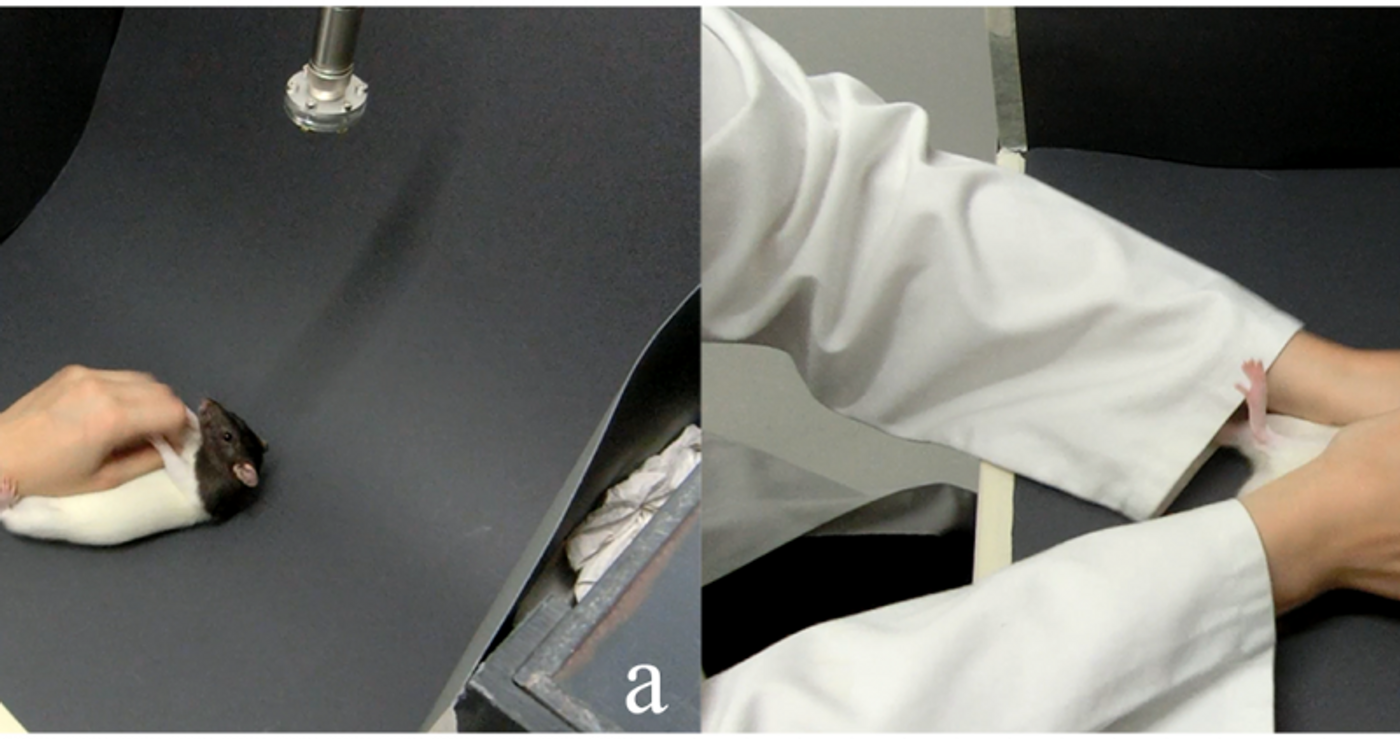Rats Apparently Smile With Their Ears, Study Finds
A new study published in the journal PLOS ONE reveals that rats, which often appear to keep their poker face all day, every day, may actually have a way of showing happiness after all.
Image Credit: PLOS ONE (2016). DOI: 10.1371/journal.pone.0166446
Even if not by smiling with their mouths, rats seem to exhibit happiness by physically altering the positioning of their ears in correlation with their eyes.
The behavior was discovered when the rats’ tummies were tickled by researchers from the University of Bern in Switzerland, a type of interaction that rats are known to enjoy. Rats emit a high-pitch noise humans can’t hear when this happens, so the researchers went ahead with the tickle-treatment anyway to see if the rats responded in any other ways.
Image Credit: PLOS ONE (2016). DOI: 10.1371/journal.pone.0166446
Other rats were subjected to less-enjoyable conditions, being “blasted” with random white noise sounds rather than getting the far more enjoyable tickle-treatment.
They used 15 male lab rats for the experiment, during which no harm came to the animals. When happy, rats seem to lower their ear positioning and become far more vocal. These reactions were not observed in the animals that were stuck in the middle of a negative experience.
This is important to understand, as rats are one of the top types of animals used in laboratory testing for drug testing, neuroscience experiments, and more. Getting to know how they exhibit their emotions can help researchers to better understand how they’re doing and how the testing may be affecting the animals’ feelings.
Previously, rats were thought to always sit in a state of emotionlessness, but this new research indicates that rats, just like other animals, can do things to exhibit how they feel.
Similarly, dogs, which are unrelated to rates, don’t smile with their teeth when they’re happy. They wag their tails and move around quickly and impatiently. Conversely, when sad or scared, dogs slow their movement and lug around with their tail lowered, sometimes between their legs.
Although this kind of behavior isn’t seen in rats, the new research indicating that their ears move in specific ways when happy or sad will probably change the way they’re tested on in coming years.
It should be interesting to see if this kind of behavior can be observed in different species of rats, or moreover, in larger groups of rats compared to just 15. If so, we might have a really important discovery here.
Source: Phys.org











